Welcome to fungal Croatia! This is not an invite to choose your favourite foot infection but rather an invitation to indulge in the ancient mycophilic tradition of foraging for wild mushrooms in the Fungi Kingdom of Croatia.
A foggy autumn morning. The alarm clock is buzzing. It is still dark outside. Your dream was rudely interrupted but you don’t care, you are in a race to be the first one to park the car at the trailhead and claim first privilege to traipse through your patch of extra virgin mushroom forest following the scent of your motionless prey. Autumn is the season when hordes of Croats descend on forests armed with sticks and knives, for once using these utensils not to fight other humans, but only to commit silent fungicide in the shade of leaves turning yellow.
Cultural tradition
Picking mushrooms is a tradition among Slavic and Romance peoples, while conspicuously absent from the germanic, mycophobic world. Whereas Brits see mushrooms as vile monsters waiting to poison unwary passers-by, as seen in Lewis Carrol’s Alice in Wonderland, Romance folk will pay a fortune to eat a vile smelling truffle.
As for Croats, once again we find proof that Croats are in fact very much a typical Slavic tribe. Whereas mushroom crazy Italian, French and Spanish folk will pick and eat almost every edible mushroom, Croats just like all other ex-Yugoslav and most other east European spore devouring traditions are much pickier and traditionally gather maybe only a dozen species. Spores don’t lie. We eat the same shrooms, therefore we are brothers in spores.
The key players
Vrganji / Porcini
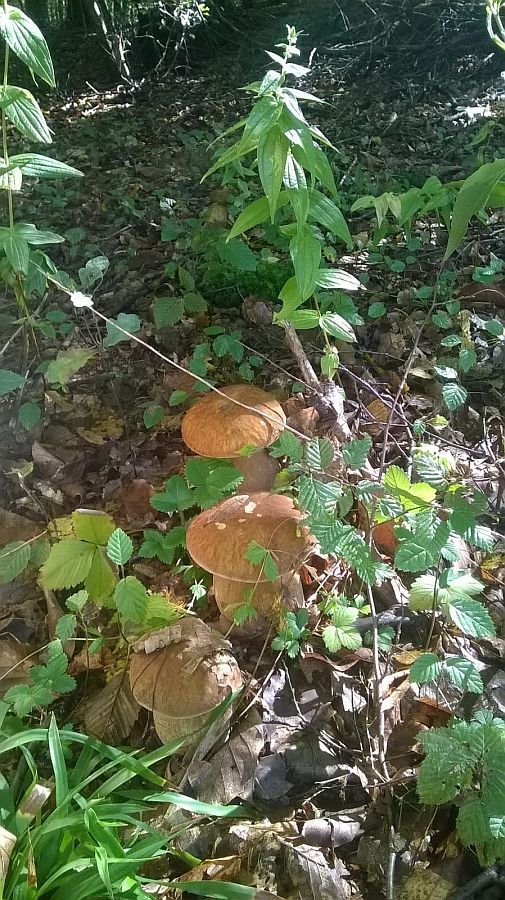
Porcinis are the biggest stars on the Croatian feral mushroom market. The most highly prized variety can be hunted down in oak forests and is especially revered when dried. The drying process intensifies its meaty flavour and Croats will often have a special hiding spot in their pantry for this shroom condiment.
Region: Northern Croatia is definitely where it is most popular but is also bountiful in surprising quantities in Dalmatia where fewer people pick them. Once upon a time on the island of Lastovo I had to give up the hunt because the porcini just kept coming at me from all directions.
Dishes: When used fresh best sautéed and paired with red meat, if dried great in soups and omelettes. Young, small specimens are often pickled and served as a side dish.
Lisičarke / Chanterelles
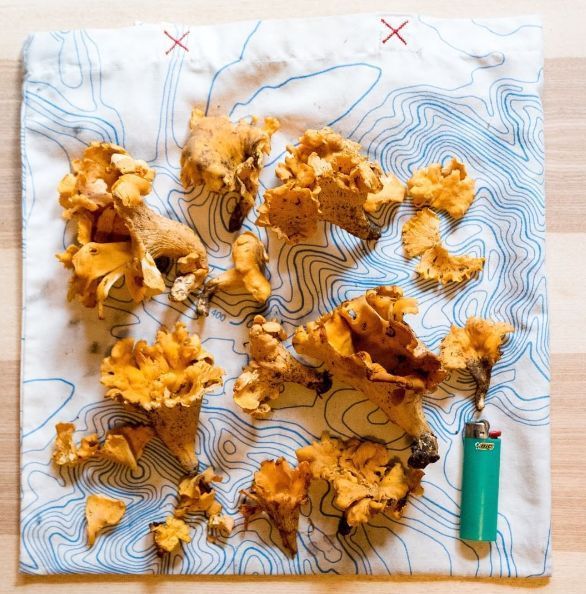
Photo: Francis Tatem
As you might have guessed by the French sounding name, this mushroom was discovered by the French. They decided we should eat it and Napoleon’s hungry soldiers spread the word around Europe.
As is the case with other orange beings, carrots, and pumpkins to name a few, they are a great source of Vitamin D. Significant amounts of potassium and Vitamin C make Chanterelles sound like a great substitute to sports drinks, right?
Region: Although one can find these moss loving fungi in the entire sporous Croatia, I shall say Dalmatia, as my favourite variety is one I found in the pine forests near Vrgorac. Islanders also have a taste for this sunny fungi that is found in copious quantities on islands like Rab where mushroom hunters chase them down as late as December.
Dishes: Risotto, sautéed and served with toasted bread and olive oil, surprisingly tasty when paired with octopus.
Mrka Trubača / Horn of Plenty
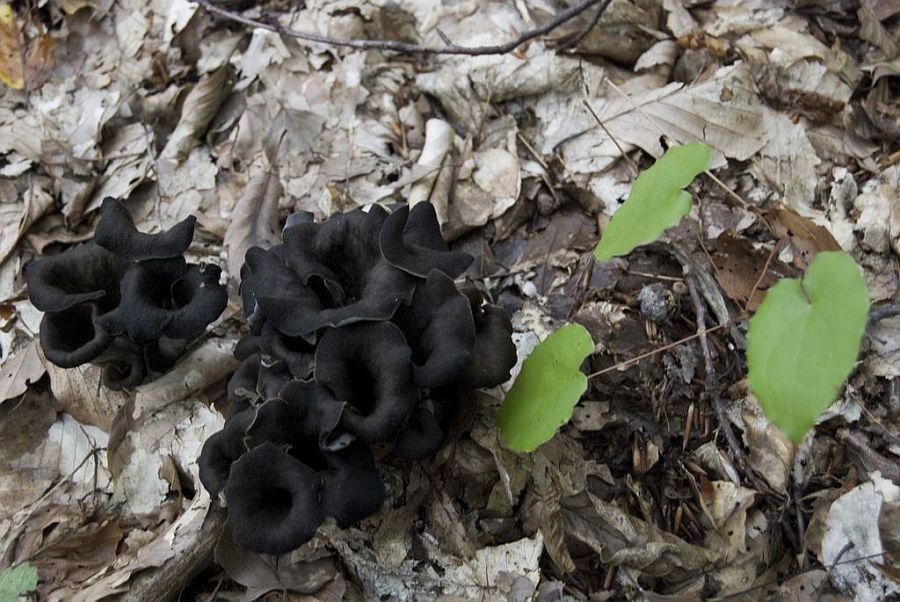
These sooty coloured mysterious denizens blanket cover floors of deciduous woods in late fall. They tend to appear in huge colonies that hide underneath leaf litter. The black colour of this underrated mushrooms led the predominantly very white Croats to consider this mushroom dangerous and poisonous. Nowadays they acknowledge its edibility but still rarely eat it afraid it will make them turn black. The French also berate it calling it the poor man’s truffle but will eat them gladly.
Region: Slavonia, October on Papuk is where black trumpets run wild and take over forest floors.
Dishes: Most commonly dried and added as a condiment to sauces and soups, very aromatic but also tasty when eaten fresh. Praised by certain wine connoisseurs and sometimes added to both red and white wine to create a unique flavour.
Bijeli Tartuf / White Truffle
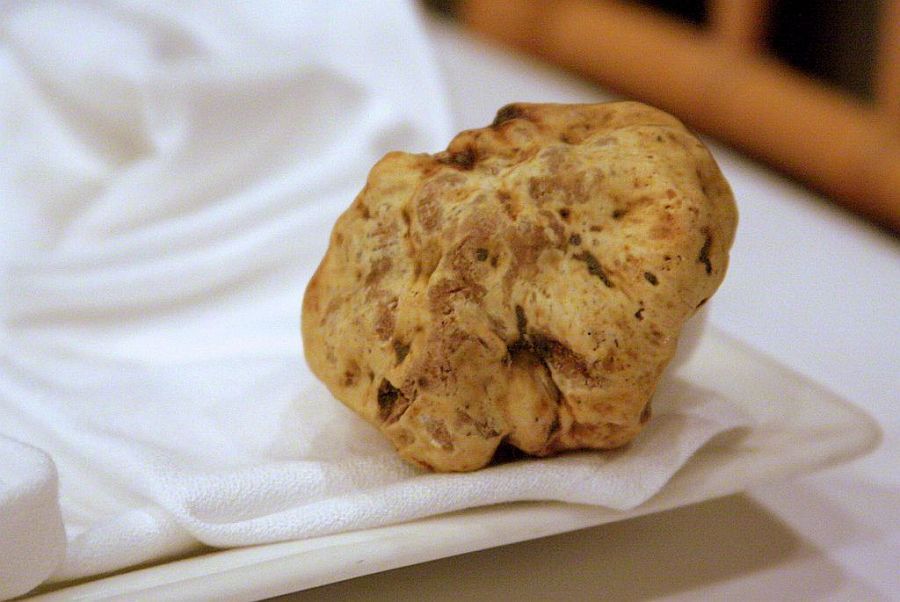
There are two types of people who eat truffles: Those who think truffles are good because they are dear and those who know they are dear because they are good.
J.L. Vaudoyer.
A favourite among pigs and certain humans. White truffles are pungent, potato looking oddballs found underground and valued for their unique taste and alleged aphrodisiac qualities. They are the second most expensive thing you can eat, after gold leaf, a two-and-a-half-pound specimen sold for $417,200 to Macau billionaire Stanley Ho in 2010.
The Istrian truffle baron Giancarlo Zigante, from Livade, once laid claim to unearthing the biggest truffle treasure ever, a 1.3 kg specimen, although spore.gossip.com received a number of calls informing them that Zigante merely purchased the truffle and the claim to fame from a lowly local truffle hunter. He however still maintains that his dog Diana sniffed out this truffle although suspiciously he has no other evidence other than Diana’s woofie testimony.
Animals like Diana are paramount to finding truffles as these shrooms fruit underground beneath oak and beech trees. Trained animals find them thanks to the fact that they emit a strong smell reminiscent of forgotten wet, moldy socks. While it was historically more common to use pigs to unearth them, truffle hunters now rely on hounds as they tend to not eat the truffles and also pose a threat to potential trespassers. If you still want to try your luck and embark on a treasure hunt in the Istrian countryside, beware, you may face the wrath and weapons of a local truffle baron and its faithful canine.
Region: Well, obviously Istria, although smaller specimens have been unearthed on Papuk, Pelješac, around Sinj and other secret localities. The majority of Istrian truffles end up exported to northern Italy and then resold at a much higher price, labelled as the famous Italian Alba white truffles. This could be considered fraud, but in fact is just hillarious as the two truffles are one and the same in every way, the Istrian ones being considered inferior only cause of their misfortune of being born in Croatia.
Dishes: Most commonly served raw, thinly sliced atop pasta or risotto. Mortals that can’t afford to buy the real deal will usually taste them as an ingredient of a savoury spread where they are blended with other mushrooms and spices.
Blagva / Caesar's mushroom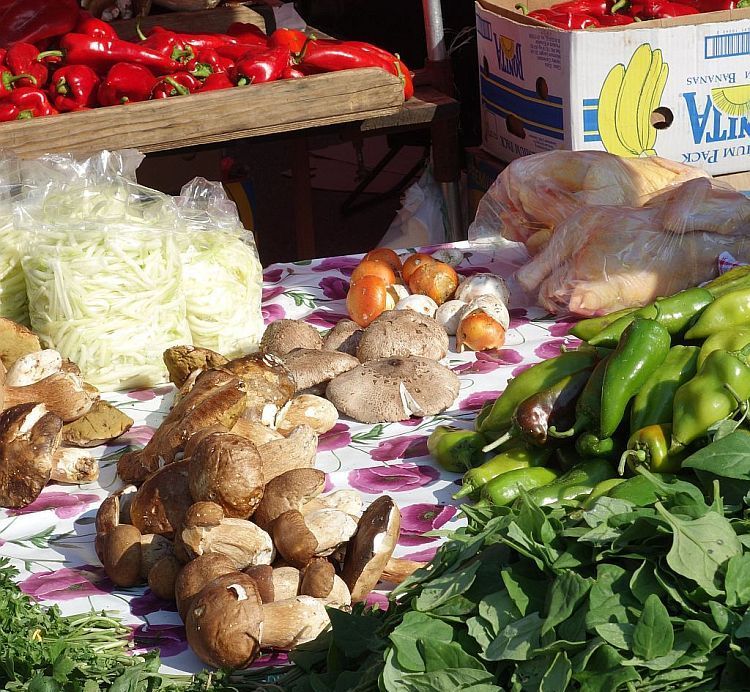
First and foremost you should know it is illegal to pick this mushroom, the date shells of the Croatian shroom community. Then again, you will find it growing not only close to chestnuts and oak trees and the nearby meadows, but also at farmers markets tagged at 200 kunas per kilo. The Croatian mushroom police force obviously has trouble identifying these bright orange mushrooms that don’t resemble any other edible mushroom.
In Roman times this mushroom was The Mushroom. It was named Boletus, at the time the word representing all fungi. Today this Latin name is taken by the Usurper, Porcini.
Sporegossip.com and Pliny the Elder claim that the roman Caesar Claudius loved this shroom so much that it cost him his life as his wife Agrippina intentionally added a Death Cap to his Blagva dish when she wanted her son Nero to take over as emperor. This Roman legend seems to have made Blagvas even more popular in the mycophagist Romance world as todays French, Italian, Basque and Catalan markets bear witness to the reverence for this fungi.
Region: The only place where I found these mushrooms regularly is the area around Glina and Petrinja in Sisačko-Moslavačka county. These long foraging quests with my dad were undertaken in the ancient country, the one that must not be named. Sadly nowadays I would steer away from most of this area as only locals know which paths are landmine free.
Dishes: Need I mention, you shall not do this in Croatia, as it is illegal, but it’s good to know Blagva is one of the few shrooms one can actually eat raw. Marinate briefly in olive oil and garlic, sprinkle some salt & pepper, a drop of lemon, garnish with some rucola, and voila. Eat like the Romans.
Pupavka/Death Cap
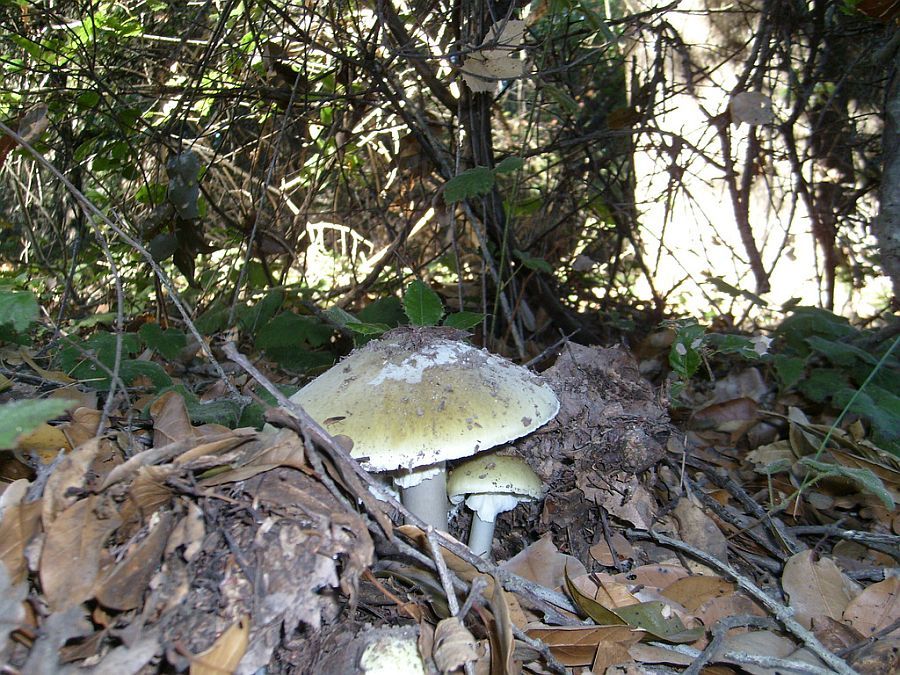
This green villain has to be mentioned as this is the fungi responsible for 90% of deaths due to shroom poisoning. Alpha Amanitin, the liver destroying toxin found in them is so potent that it takes only 6 mg to send you away for good. A single Death Cap will contain up to 50 mg so go figure it out how deadly it is. Foraging in general is a wonderful scavenger hunt that brings us back to our hunter gatherer roots but remember that our ancestors learned what not to eat the hard way and this knowledge was passed over from generation to generation. Therefore find a trusted tutor, a good key to the shroom world, fill your mushroom basket slowly and carefully, and if in doubt, toss it out.
Region: Hades. Also found pretty much everywhere in Croatia.
Dishes: Do NOT eat. Slow, painful death! An inspiration for the Croatian proverb: All mushrooms are edible, but some only once.
These aforementioned shrooms form only the tip of the Croatian Shroomberg. Morels, Macro Mushrooms, Puffballs, Parasol shrooms, Oyster shrooms, the list is long and tasty, with but a few potential villains to spoil the party.
Legalise it!
We mentioned picking Blagvas is illegal, well this seems to be the legacy of a long of fungal law tradition, as the first important set of rules concerning the commerce of wild fungi in the world was elaborated in 1820 under Austrian-Hungarian domination. This somehow became ingrained so deeply in Croatian civil law that after the breakup of former Yugoslavia, Croatia was the first country to regulate the exploitation of wild mushrooms for commercial use. The most important law being that a person is allowed to pick only 2 kg per mushroom hunt.
While in theory this is a jolly god environmental law to protect shroomy habitats from overpicking there is as of late a lot of evidence that even regular, heavy picking, has no detrimental effect at all. So it seems this is just another silly law that some well-meaning human came up with no supporting scientific evidence whatsoever.
Ah well, Croatians, being their usual law abiding selves obviously don’t worry about this too much as not only do they poach Blagvas and sell them on farmers markets but also openly brag about their loots on social media. And then some copper read this one article on TCN and thought of a new way to make some money for the Uhljeb Republic.
Culinary feast & Tourist activity
Rather than making money off wild mushrooms by fining people foraging, Croatia could do a better job at using this natural treasure trove to generate more income by offering mushroom hunting tours as offered in Russia and Poland. Istria does offer snobbish truffle hunting tours but that’s about it. meanwhile in Slovenia.
Yes, one only has to cross into neighbouring Slovenia to find mycelium spores ever present on the menus of most respectable haute cuisine restaurants. Croatians still don’t seem to realize how much wealthy people like to eat mushrooms and how by including them more often on menus they can attract the passionate mycophages of the world who will often fly thousands of miles just to taste freshly picked exotic sylvan creations. Croatia offers only a few restaurants in Istria and a handful in and around Zagreb and Varaždin that commonly only seasonally offer wild mushrooms, usually only truffles, porcini and chanterelles.
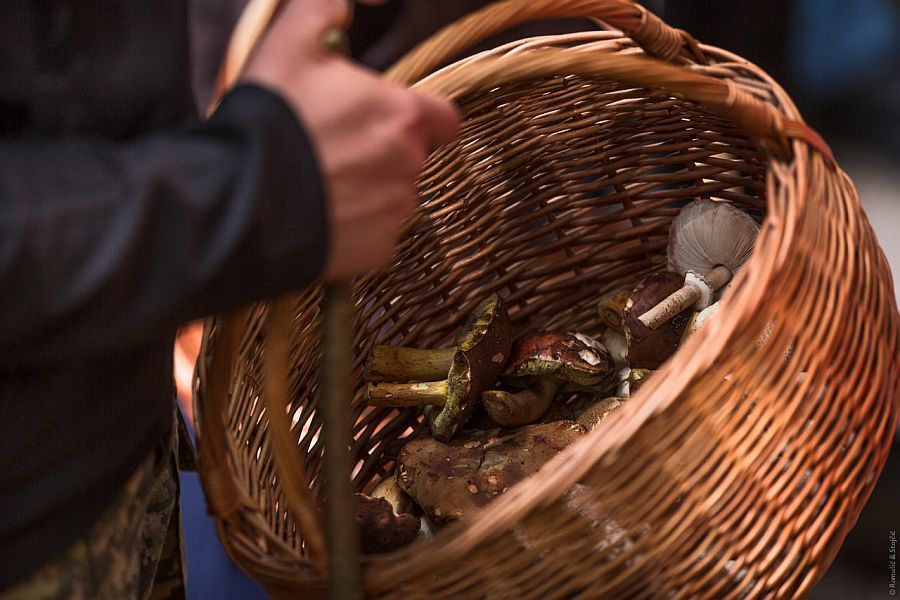
Cro Shroom Facts
• Thanks to its vicinity to Italy, the best shroom market in Croatia is in Rovinj where one can find mushrooms unbeknownst to most Croatians.
• Encountering spider webs at the trailhead is considered auspicious, a sign that no other mushroom hunter ransacked your spot. However if there is no spider web or worse yet, one hears sounds of human voices coming from nearby, Croatian curses pierce the air, as someone has beaten you to the punch.
• One traditionally celebrates the discovery of the first mushroom by taking a swig from a flask filled with a liquer of choice. Shrooming and booze go hand in hand in Croatia hence it is not uncommon to find wasted mushroom hunters lost on a lonely forest road wondering where the hell to go. As mushroom hunting is traditionally a family affair where small children are present as useful assistants being low to the ground, this often results in hilarious stories and memories that kids will treasure for the rest of their lives.
• Wild shrooms perish quickly so where you stash them is paramount to enjoying the fruits of your foraging expedition. Airflow is important to keep them from rotting so upon capturing wild fungi Croatian hunters will typically transfer them into a traditional woven open lid basket, but a nice canvas bag will also serve the purpose just fine. After bringing them home ideally eat them immediately. However if you are unable to do so remember that although some shrooms will keep for up to 7 days, the spores need to "breathe," so ideally they should be stored in an open container or loosely closed paper bag and never in a sealed plastic bag.
Are you ready to discover your ancestral hunter gatherer roots? Feel the adrenaline rush and thrill of coming upon the most beautiful mushroom that ever roamed the earth and the pleasure of introducing this mushroom to your frying pan?
Enter the world of mushrooming in the shroomy land of Croatia and while you might just end up enjoying this ancient activity for the long fruitless strolls in beautiful forests, if you slow down and look carefully at the forest floor you will eventually also savour it for the gusto that it will bring to your palate.


